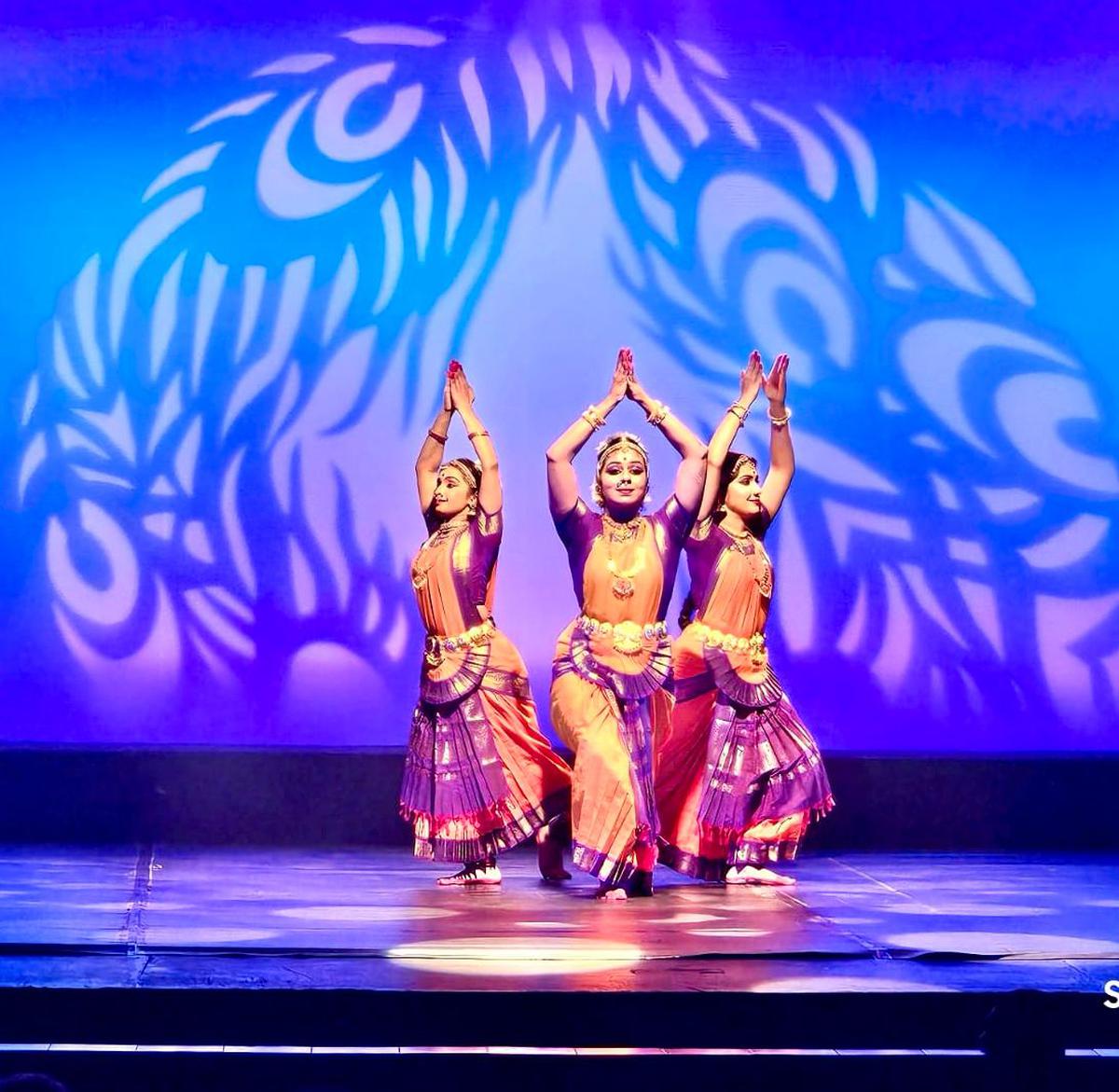
‘Kanda Kadamba Kathirvela’ was premiered recently in Chennai
| Photo Credit: Special Arrangement
The dance production ‘Kanda Kadamba Kathirvela’, which was recently staged in Chennai in connection with the Skanda Sashti celebrations.
Directed and choreographed by Radhika Shurajit, the performance featured a visual depiction of the popular ‘Kanda Sashti Kavacham’ hymn along with a few more songs on Muruga.
The theme for the first composition revolved around the birth of Muruga, who is believed to have been born out of the six sparks that emanated from Shiva’s third eye. Agni is said to have placed these sparks in a pond called Saravana, where six babies were born on six lotuses. Parvati hugged the babies and transformed them into one being with six heads.
Six girls, representing the six kritikas (maidens) who raised the babies, emerged from darkness with their frames silhouetted by back lighting. They raised their hands, holding a lotus even as chants on Muruga echoed through the hall. Visualised well by Radhika, this depiction of Arumuga, without much dramatisation, was an impressive introduction to the theme.

The production is in praise of Muruga’s valour
| Photo Credit:
Special Arrangement
To make it appealing for the audience, Radhika chose popular songs on Muruga. Nritta dominated the presentation of the famous Thiruppughazh, ‘Muthai tharu pathi thirunagai’. The choreography was marked by vibrant and energetic movements.
Presenting a hymn like ‘Kanda Sashti Kavacham’ in Natya is no easy task, but Radhika managed to sustain interest through impressive visualisation. The healing process of various body parts as described in the lyrics was well-depicted. Masks were used to show the evil forces (bhootha, pisasu) mentioned in the hymn.
The highlight of the production was the Kanda Sasthi Kavacham, which resonated with the viewers. But one felt that some of the songs chosen were not suitable for dance choreography. The expressions and movements looked repetitive because of the limited scope for dramatisation.
Another popular song ‘Arupadai veedu konda thirumuruga’ that followed were based on narratives associated with the six kshetras of Muruga, popularly called Arupadaiveedu.
A Lalgudi Jayaraman thillana and the Thiruppugazh ‘Nada vindhu kaladi’ were the closing pieces.
The music support, which maintained the spirit of the original renditions, enhanced the visual impact. Radha Badri’s singing of each one of the iconic songs was commendable. The orchestra comprised T.K. Padmanabhan (violin), Nellai Kannan (mridangam), T. Shashidhar (flute), and Ananthanarayanan (veena). Lighting design by Seeta Ratnakar and Venkatesh Krishnan brought alive some of the scenes.
Stay connected with us on social media platform for instant update click here to join our Twitter, & Facebook
We are now on Telegram. Click here to join our channel (@TechiUpdate) and stay updated with the latest Technology headlines.
For all the latest Entertainment News Click Here
For the latest news and updates, follow us on Google News.
